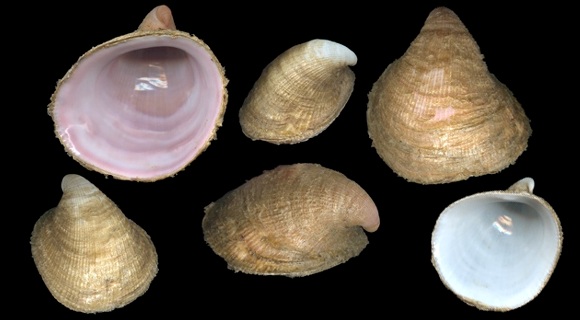
Iceland & northern Norway to Biafra Bight and Mediterranean, Greenland to Florida, Bermuda. Intertidal grounds down to continental shelf and upper slope, often in association with some lamellibranchs such as Scallops, Queenies or Horse-Mussels, more or less permanently settled along their margins, searching for food inside the valves (kleptovore behaviour); sometimes they are found on Turritella communis, sometimes on stones.
Protonym: Patella ungarica.
60-70m deep, off Málaga, Andalucia, S. Spain. 32-41mm.
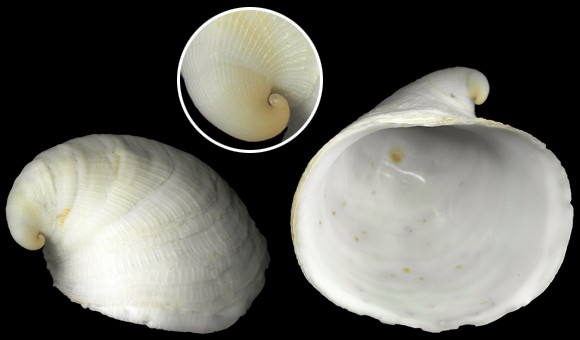
« Patella. Shell complete [no holes as in Fussirellids], tapered, pointed and striated; apex hooked. » – Linné: Systema naturae vol. I, page 782, item 667 in the 10ht edition. Sometimes erroneously writen “hungaricus”.
Large specimen with periostracum removed, found on a Pectinid at 20m deep, Málaga. 56mm.
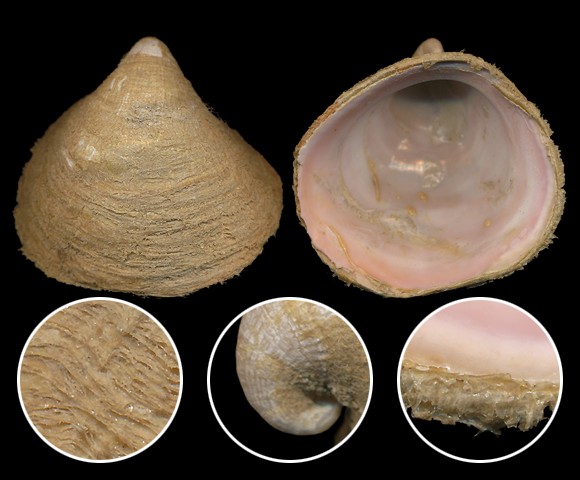
« The shell is rather thin and semipellucid, when full grown, of the size of a walnut; but small ones, of the size of filberds [hazelnuts], are most commonly met with. It is covered with an epidermis or cuticle, especially on the margins, a thin and tough skin set with a pile of short, thick, brown, silky filaments. » – E. M. da Costa: Historia naturalis testaceorum Britanniae, London 1778, p.12.
200-300m deep, off Vilanova i la Geltru, Barcelona, Catalunya, NE. Spain. 39mm.
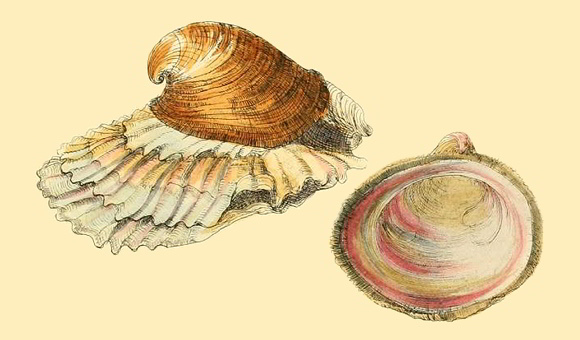
« The shape is conic, very elevated or copped; the base or aperture is round; and the margins are not quite level, being always somewhat ragged or uneven. The vertex turns spirally, and falls very low backwards, whereby the shell is so greatly fore-shortened on the side it hangs over, that it is near perpendicular, and only about 3/8 of an inch in length, while the other side is so lenghtened as to measure near two inches. » – op. cit. p.13.
Pileopsis ungarica in L. A. Reeve: Conchologia systematica vol. II, London 1842, plate CXLVI.
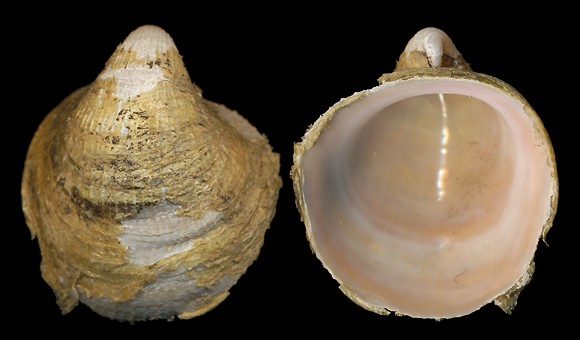
« The outside has no gloss, is whitish, and very thickly striated with fine longitudinal furrows from the top to the margins; the surface is not even, but always has rugged spaces and depressions, like bruises, and towards the margins it is also wrought with circular or transverse wrinkles. The inside is smooth, finely glazed or glossy white, with a beautiful rosy blush or carnation colour. »
A specimen from cold waters: 70-75m deep, Nymphe Bank, Cork county, N. Celtic Sea, SE. Ireland. 22mm.
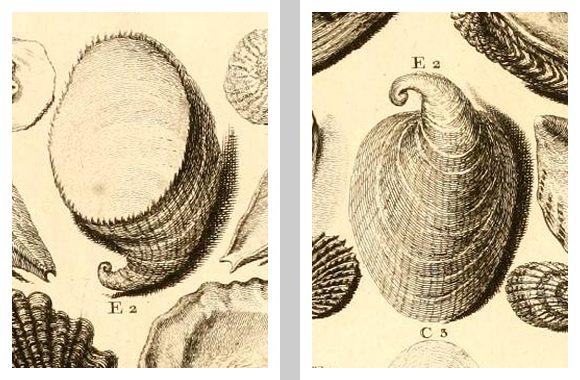
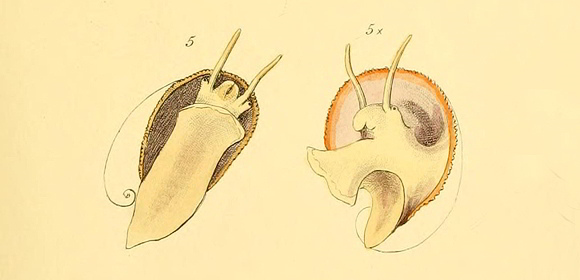
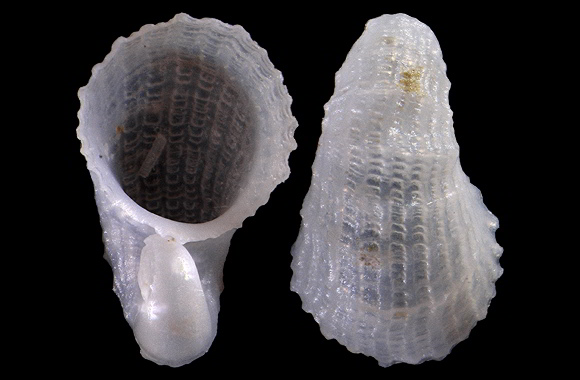
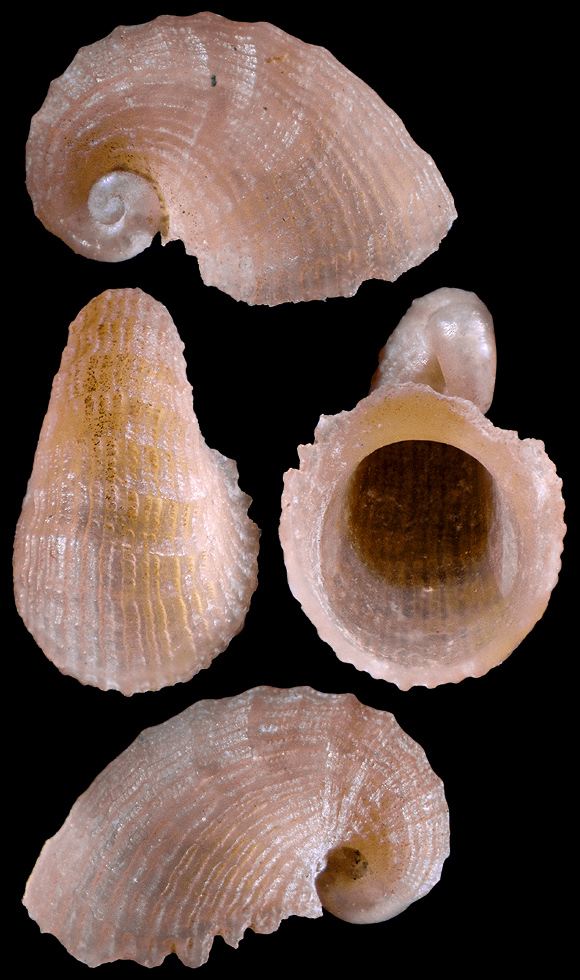
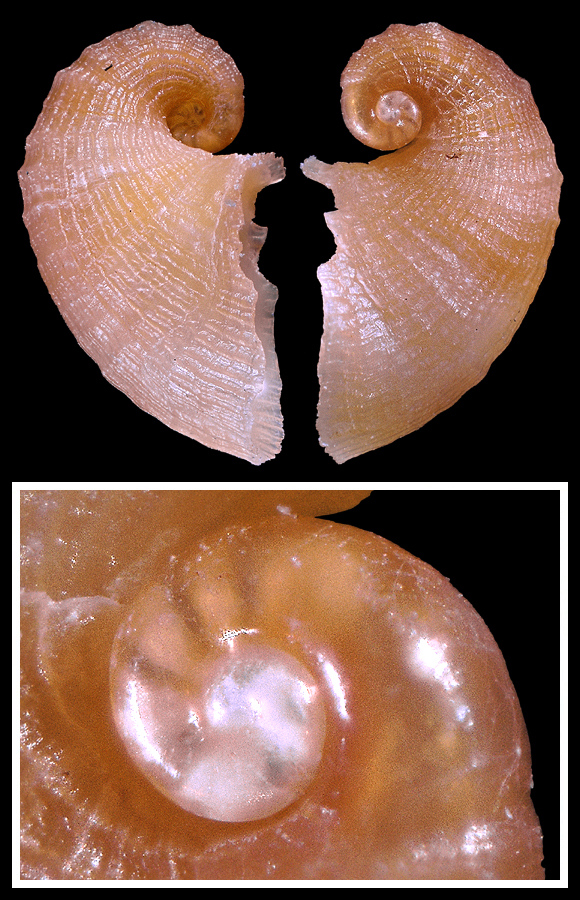
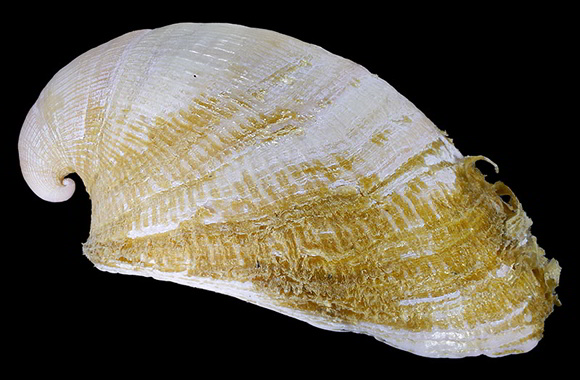
Original pictures provided by S. Clanzig (FR).
– (CC BY-NC-SA) –
